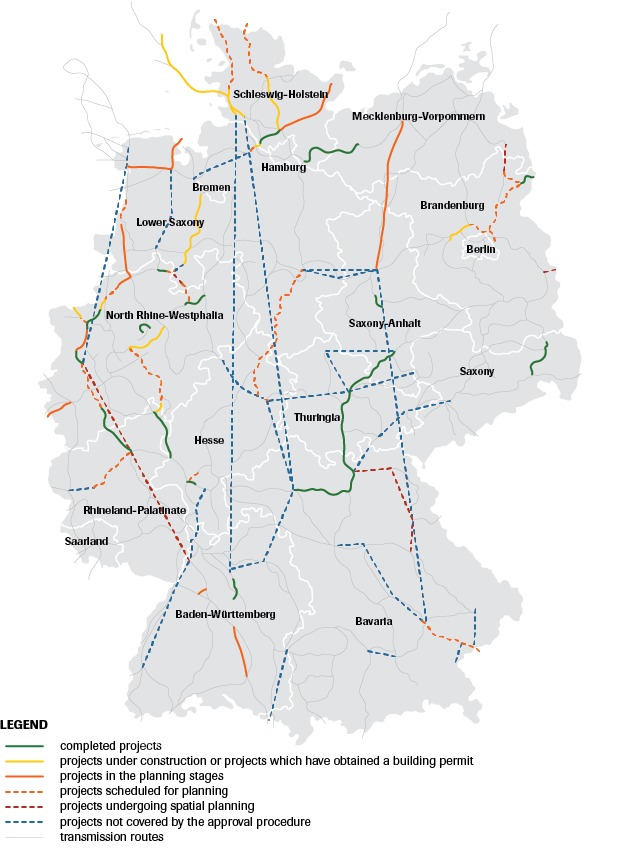Germany: time is running out for the development of the electricity and energy network
On 28th September the German Ministry for Economic Affairs and Energy published a report on the state of the development of the electricity and energy network. The Energy Line Extension Act foresees the construction of 1,800 km of power lines—so far 850 km of the power lines have obtained building permits and 650 km have already been constructed (see Map). However, the work has not begun on any of the routes which are essential for the energy transformation in Germany - the ‘energy highways linking the north with the south of the country. According to the German government, 85% of the planned routes will be completed by 2020 and 100% by 2025. The key routes linking the north and the south should be completed before the scheduled decommissioning of six German nuclear power plants in 2021 and 2022. This is the main premise of the Energiewende (Germany’s energy strategy to 2050).
Commentary
- To date the speed of the construction should be evaluated as being rather slow. This is due both to protests from local inhabitants and to the resistance of the CSU government in Bavaria which blocked the construction of the vital transmission routes linking the north and south of the country. Bavaria demanded the construction of underground routes or changes in where they are situated. Eventually, in December 2015 the parliament adopted adequate changes in the law which made it possible to plan transmission routes in underground pipes. Possible delays in the construction of energy routes should not however lead to breaks in supplying electricity. Nor should an extension of the operation of nuclear power plants in case of delays in the construction of the transmission routes be expected since there is no political consent to this in Germany.
- The construction of new transmission lines will lead to a substantial increase in payments for the transmission and distribution of energy. In 2016 alone operators of transmission networks have announced an increase in payments by as much as 80%. Higher maintenance costs are linked to the cost of the extension of the network and also to the necessity of paying compensation to producers of wind power who had to switch off their power plants because it was not possible to transmit electricity to consumers in the south of Germany. The costs of the construction of transmission routes are considerably increased due to the fact that they run underground – this technology is six times more expensive. An increase in energy bills may result in short term dissatisfaction in society but it will not lead to a change in Germany’s energy strategy.
- The construction of energy connectors with other countries also forms part of the plans to expand the transmission lines. This is essential given the implementation of Germany’s strategy for the development of renewable sources of energy. By basing the imports and exports of energy on the intensity of domestic solar and wind energy production, Germany can lower the costs of the functioning of the energy system as a whole. The present plans envisage the construction or modernisation of nine intersystem connectors, including two with Poland (Vierraden–Krajnik by 2020, and Eisenhüttenstadt–Baczyna after 2030). An electricity line linking Germany to Norway is also under construction.





